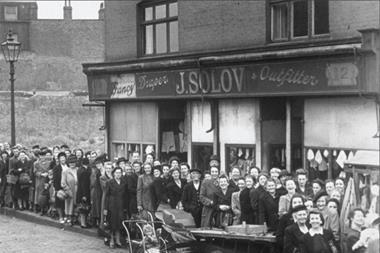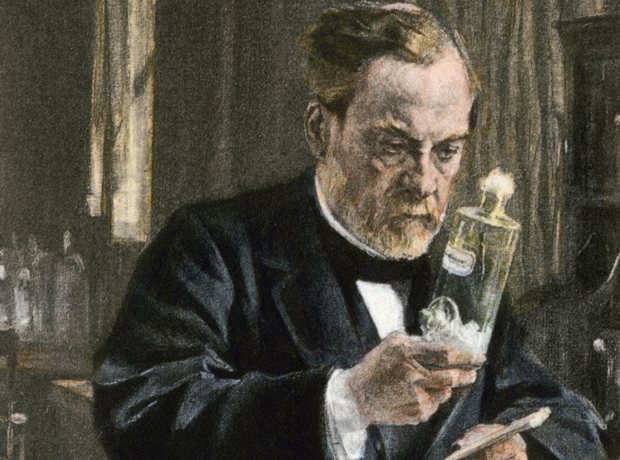Imagine a CD entitled ‘Now That’s What I Call The Best Grocery Ads Of All Time’. It would have to be a double. Pride of place would almost certainly go to the Guinness surfers, the Smash Martians and Cadbury’s gorilla. But there would be countless other greats, too.
The 1999 Guinness ad, voted best ad of ‘all time’ in a poll conducted by Channel 4 and The Sunday Times, was a visceral pull on the emotions, awesome in its marriage of imagery and technology, but rooted in an established brand proposition: that good things come to those who wait.
The Space Age era of 1974, when anything man-made was considered good, the Smash Martians wrapped a highly rational proposition - save time by using instant potato - inside a comedic skit that poked fun at primitive earthlings (like your mum), breaking the rule about never insulting the consumer.
As for the gorilla he made chocolate fun again, reconnecting Cadbury’s with a younger generation, and he went global via social media - all without a product shot.
If it’s true that the food and drink a nation consumes defines its culture and psyche, advertising also mirrors that society, not just in the way we eat, shop and live, but reflecting socio-economics, wealth, media and technology.
So what do we make of the narrative arc of food, drink and retail advertising over the past 150 years? Start with the iconic Pears soap poster that used Millais’s famous Bubbles portrait to portray purity. Enjoy the endearing normality of the Oxo family as an antidote to microwaves and ready-to-eat food.
Laugh at Dudley Moore and his Tesco chickens. Sing along with the operatic Wall’s Cornetto gondoliers bastardising O Sole Mio (parodied 30 years later by Boddington’s). And marvel at Heston Blumenthal, a chef best known for his molecular gastronomy and off-the-wall concoctions such as bacon-and-egg ice cream, teaching Waitrose’s middle-class fans about baking pine sugar-dusted mince pies.
Think of a trend, and an ad marks it. Labour-saving convenience foods were exemplified by a famous Birds Eye campaign in the 60s in which housewives were encouraged to pass meals off as all their own work. ‘They’ll make a dishonest woman out of you,’ ran the pay-off line.
Oven-ready and instant microwaveable cuisine can be seen in ads for McCain chips and cook-in sauces like Chicken Tonight. Ethnic or quasi-ethnic food in ads from Patak’s and Loyd Grossman.
And now the drive for authenticity and health in which celebrity chefs like Jamie and Delia appear first on television showing us how to cook, then pop up in ads telling us what to cook.
We’ve seen campaigns that emphasise the sanctity of the nuclear family, centred around the eternal stereotype of working dad and housewife plus kids (a 1950s Oxo campaign was all about giving food ‘man appeal’) working mums and stay-at-home dads single-parent families singletons (often with added romance as in Gold Blend or the Lurpak bloke) and now back to modern-day families in David Cameron’s Big Society push as Bisto encourages us to eat together at least once a week on ‘Aaah night’.
That advertising history also contains a treasure-trove of glorious images and slogans that have stamped themselves irrevocably on the national consciousness.
Nor should we forget, of course, their role in achieving what any advertiser wants: building powerhouse brands creating distinctive and meaningful value propositions the ability to charge a premium and driving sales.
Think of today’s über-brands, and what they have in common is a history of memorable advertising: Heinz, Cadbury’s, Hovis, Walkers, Fairy Liquid, PG Tips, Country Life, Weetabix, Oxo, Coca-Cola, Tetley Tea, Guinness and, of course, the supermarkets. But how advertising has changed.
In 1862, grocery advertising was one-dimensional. Branded products few and far between. The concept of a housewife who shopped for branded goods was virtually unknown. Those who could afford such goods had servants to do the shopping. Media choice was between newspapers and posters.
With small circulations and a mostly male readership, newspapers were of limited use as an advertising medium. Far more effective - and visible - was the poster, which had the added advantage of colour and national coverage.
Early ads like those for Lux, Camp Coffee, Bisto, Ceylindo Tea, Bovril and later Guinness combined memorable imagery - often the work of established artists - with simple slogans like ‘Guinness for strength’, the first attempt to promote a beer as bestowing a health benefit.
The advent of commercial TV
The period following the First World War was notable for the emancipation of women and the rise of the middle-class housewife who, for the first time, did her own shopping. Advertisers could now target them in meaningful numbers through magazines like Good Housekeeping. Depression, the Second World War and post-war rationing (even of newsprint) took their toll on grocery advertising. But all that was to change in 1955 with the advent of commercial TV. Looking back, the first television commercial, for Gibbs SR, seems laughably ponderous. But by combining a strong image (a tube embedded in an iceblock), tinkly music, a bit of science, endless product shots and multiple repetition of its USP - ‘the tingling taste sensation’ - it offered a foretaste of what was to come.
As the hesitant 50s gave way to the swinging 60s - in tandem with greater wealth and the revolution in domestic appliances - British advertising flowered, attracting a mélange of Oxbridge graduates, art students, writers, photographers, musicians and misfits, all enthralled by the creative possibilities of television.
Great ads rolled off the production line with catchy slogans like ‘Drinka Pinta Milka Day’, ‘Watch out, there’s a Humphrey about’ or ‘Go to Work on an Egg’. Then there were the mini soap operas and 60-second comedies like the Leonard Rossiter and Joan Collins series for Cinzano. Add to this a host of iconic characters such as the Tetley Tea folk, Mr Kipling, the PG Tips chimps, or the Sugar Puffs Honey Monster, and it’s easy to see why these ads had such enduring appeal.
Unlike most US ads, which said it loud and said it often, the best British ads used understatement, wit, charm and irreverence.
Sometimes too, they were just plain weird, as with the Tango slap, or R Whites’ secret lemonade drinker who’d sneak down in the middle of the night to raid the fridge.
Nostalgia - always a powerful Proustian trigger for food and drink - also figures large, exemplified by the Hovis bread boy in 1975, and a Kellogg’s Corn Flakes series that urged adults to eat cereal like kids (ie in the evenings, too).
Another core proposition is food as social or family facilitator (such as Gareth Hunt and his girlfriends for Nescafé in the 80s) or the current KFC campaign. The reverse is self-indulgence (ice cream ads and Cadbury’s Flake and ‘Naughty but Nice’ cream bun ads from the British Dairy Council), and its close relative - it’s too good to share - exemplified by Walkers or Jaffa Cakes.
The past 25 years has also seen the rise of the retailer as brand advertiser. Fixated on price-based advertising until the 1980s (although Marks & Spencer regarded the principle of advertising as anathema until the late 1990s), they have used advertising to create strong umbrella brands.
Sainsbury’s led the way in the 1980s by using magazines and colour supplements to stress the quality and freshness of its food (one brilliant double-page spread ran the headline ‘At Sainsbury’s if we don’t sell our mince in a day, we don’t sell it’) under a strapline that lasted for many years: ‘Good food costs less at Sainsbury’s’.
In pursuit of free-range chicken
But it took Tesco to move the multiples to another level when, in 1990, it introduced Dudley Moore as a hapless buyer whose pursuit of free-range chickens took him all round the world sourcing new products. That campaign allowed Tesco to shed its ‘pile-it-high, sell-it-cheap’ image and marked the advent of retailer as brand.
These days, the multiples spread their advertising across the media, but the heavy fighting in the current price wars largely takes place in the tabloid press.
And while the multiples constitute desirable accounts in themselves, the advertising industry has another reason to be grateful to them. By linking shelf space to advertising budgets, they have in effect created a highly competitive advertising eco-system that forces brands to up their budgets and creativity.
Through the use of chefs as brand spokespeople, the trend now is to authenticity. You can define this via factors such as purity, freshness and sustainability, but also through the idea that if you want real food you have to cook, but it’s fun, easy and provides huge personal satisfaction.
Sainsbury’s Jamie Oliver campaign led the way by showing consumers what to cook, where to buy the ingredients and how to cook them.
The baton has been picked up by the likes of Knorr and Bernard Matthews (both Marco Pierre White), and even Asda and Phil Vickery, as well as Waitrose with its powerful pairing of Delia Smith and Heston Blumenthal.
You can also see this accent on authenticity in the rise of brands like Innocent, but nothing defines the current era quite like Yeo Valley, mixing big TV with social media. Its rapping farmer and boyband ads have chalked up millions of YouTube views and hundreds of thousands of Facebook likes, and top-trended on Twitter.
Traditional thinking had it that as broadcast media fragmented, brands would never again achieve the mass social currency of the pre-digital era.
But those, like Yeo Valley, that maximise the new-media toolbox can achieve faculous bang for a limited buck. That might be mobile marketing via QR codes or location-based applications like FourSquare. Or it might be Groupon-type promotional couponing.
It’s a time of permanent experimentation, however, which is why brand owners such as Coca-Cola, AB InBev, Nestlé, Unilever and P&G are cosying up to Silicon Valley as well as Twitter and Facebook so they don’t miss out on the next big thing.
The problem is that nobody knows what that next big thing will be. It won’t be 150 years before the Yeo Valley ads look as quaint as a Bovril poster.
Sign in to comment on this article
Not logged in before? Register for FREE guest access today.
You will be able to:
- Read more stories
- Receive daily newsletters
- Comment on stories
Advert
















No comments yet